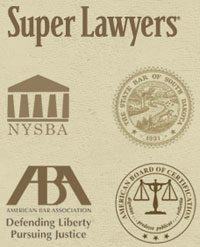The non-meandered waters law of 2017 is about to slide into long-term legal acceptance by the state legislature. A bill is now pending before the 2018 legislature to extend the life of this new set of statutes. The non-meandered water law passed last year at a special session of the legislature is an error-ladened compromise which, if continued without correction, will indeed slide into an indifferent acceptance by the state. The purpose of the law is to open up temporary bodies of water to public use. The law has several good points and is an effort to fix a very unique set of challenges presented by Mother Nature. It also has several clear problems. Its provisions do not have a proper definition of the owner of land, creates different rules and rights for different landowners, does not allow for setbacks and does not provide for a quiet time for recreational use of the waters. I outlined these and other problems in my open letter to the legislature: http://www.capjournal.com/opinions/columnist/a-bill-of-particulars-for-the-legislature/article_ce1b72ee-563e-11e7-93d2-67b295d08c1a.html
This new water law created two sets of laws for non-meandered lakes. The rights, duties and liabilities of landowners under the law’s particularly designated non-meandered lakes are not the same as the rights, duties and liabilities as those of the landowners under all other non-meandered lakes. Many of the non-meandered waters are over private land. The management of non-meandered waters has a more significant, direct and personal impact on private landowners than do other public bodies of water in the state. That is why the special legislative session gave authority in the law to the Game, Fish and Parks Commission to write rules to make everything ‘all right.’ The GFP Commission created new rules. Those rules tell a certain class of landowner how he might petition the Commission to take his public property off the list of waters over which sportsmen might hunt and fish. The waters in one class are automatically, under the 2017 law, open to hunting and fishing. The petition process allows for no real due process. The rules were written poorly. The legislature should correct this. It should discharge its duty and not rush to a muddled consensus on important property rights issues.
In the Fall of 2017 several landowners in Marshall County wanted a 100 yard setback of public activity on the non-meandered water covering their property. They were caught in a legal trap created by the legislature and enforced by GF&P. What they sought was not unreasonable. In fact the new law permits creating a setback for other non-meandered landowners who may do it on their own initiative. Nevertheless the water over the owner’s Marshall County land was a part of those water bodies the legislature declared to be ‘automatically’ open to public use and access. The owners of other non-meandered waters in the state can put up access restrictive buoys and create a setback. But these Marshall County landowners had to petition the GFP Commission before they might do this very act because their land fell within the ‘automatically open’ class of lakes. Additionally these landowners had the legal burden of proof to show that what they wanted was justifiable. Such a burden of proof is not required of other non-meandered landowners. In November the Commission denied the request stating that the landowners had not met their burden of proof to show why such a setback should be granted. Property rights are not an experiment. This law should not be treated like an experiment in resource management. A system creating a second class of landowners who are required to meet a higher legal benchmark to do something their neighbors can already do, all on non-meandered bodies of water, should not be tolerated in a just system.
David Ganje of Ganje Law Offices practices in the area of natural resources, environmental and commercial law





